Introduction
Rượu is a unique spirit and one the Vietnamese fought hard to maintain, especially when the French colonial regime threatened to take it away.
But before we tell you the story of Vietnamese rượu, however, there are two words that need addressing: “Rice wine”.
Rượu is not a rice wine, but a spirit, distilled and maintaining only the essence of Vietnamese rice wine.
Sơn Tinh Original Rượu works hard to maintain the traditional flavours of Vietnam, while providing a welcome and surprising addition to mainstream spirits in international competitions and cocktail bars globally.
During the last 20 years we have crafted Vietnam in a glass and created something award-winning.
The story of Vietnamese rượu, however, begins much further back.
Content
_________
Part 1: A distilled history of Ruou
_________
Part 2: Where Ruou Son Tinh began
_________
Part 5: Vietnam and rice
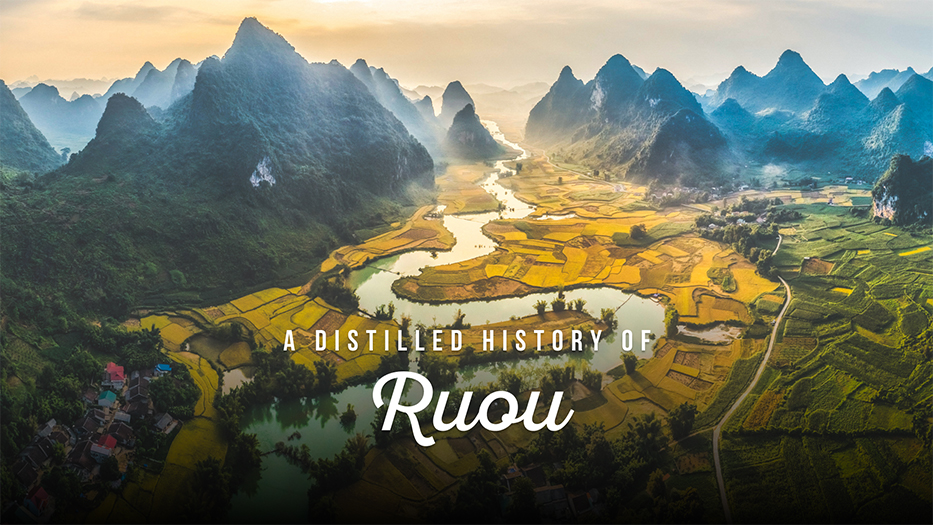
A distilled history of rượu
From ancient China to Vietnamese pig farmers
The history of rượu dates back to ancient China, 1390, give or take 100 years.
The Chinese are enjoying their recent freedom from the Mongol-lead Yuan dynasty by sucking down jars of rice wine. Little do they know that a new type of alcohol is about to change the beverage zeitgeist.
Somewhere in China, the first batches of distilled spirit made from Sorghum, or Baijiu, are being cooked up. The wine that people are drinking is being distilled. The water content is being reduced, leaving only the spirit behind.
With its strong but rather harsh flavour and ability to get everyone quite tipsy, Baijiu sets the 14th century’s drinks industry ablaze. The spirit quickly spread throughout Asia, eventually making its way to Vietnam.
Here, it was only natural to use the stunning variety of fragrant sticky rice strains grown in the Red River Delta to add complexity and subtleness to the alcohol; it was given the name rượu.
Rượu became the champion of alcoholic drinks, loved by the every-man and royalty alike. There was no time of the day the Vietnamese couldn’t, or shouldn’t, enjoy a cup. After all, the fragrance of rice is in almost every Asian’s blood.
The production tended to be the job of the women, and for centuries rượu lived life as a bi-product of pig farming. The rice would be fermented and distilled to rượu before being fed to the pigs. It existed just to off-set the cost of feeding the swine.
There was a village that made some of the best rượu in the country: Phú Lộc. This village had perfected the art of distillation, with a special yeast that thrived in northern Vietnam’s temperamental atmosphere.
The spirit in Phú Lộc was so good, in fact, that it was exempt from the Nguyen Dynasty’s strict rượu regulations.
A bloody fight for good rượu
Rượu remained a pig farmer’s side-hustle until the 19th century – and in many regions until now.
Industry started modestly. Entrepreneurial villagers would come together to make micro-distilleries. One bought the rice, another the pottery, and the third would oversee the fermentation. The largest of these distilleries could whip up 600 litres a day.
Everything changed when the ethnic Chinese entered the scene, increasing production and sales from these small factories.
Similarly, the Vietnamese government saw an opportunity to make some money. They began siphoning their share of the work through taxes and it was these ‘tax farms’ that the French colonists modeled their regime on.
With global expansion on the brain, the French looked to Indochina as their next big venture.
Fortunately for them, they found that everything they needed for a profitable rượu industry was already here. All that was left to do was to increase the price four-fold, which they did in 1897, and outsource the tax collection to Chinese-run tax farms.
This is where Albert Calmette comes in. A scientist and doctor, Calmette came to Vietnam with the modest intention of researching vaccines. The colonial government, on the other hand, had other ideas.
The government told Calmette to ditch the vaccines and figure out a way to double the output of alcohol. By isolating the enzyme required for rice fermentation, Calmette halved the time it took to produce the drink and achieved the government’s output expectations.
What Calmette actually achieved was a significantly worse product. An industrial, tasteless but consistent ethanol alcohol of gut-wrenching strength. The government was ecstatic.
Utilising Calmette’s chemistry, they poured their money into A.R Fontaine, a young French entrepreneur. In 1905 Fontaine was granted exclusive rights to alcohol production in the colony.
Fontaine created a colossal factory in Hanoi. It chugged away round the clock, producing a whopping 20,000 litres of pure alcohol a day.
With such high production, it would have been next to impossible for the French to create a high-quality product. Instead, they created what would be labeled ‘vodka’ today, and was called Rượu Tỵ at the time.
Besides being outrageously strong and lacking anything close to flavour, it was often dangerous. Sometimes dirty water would be added at the last minute to lower the alcohol content. Sometimes leaky pipes would spill poison into the alcohol.
Whether they liked it or not, the Vietnamese had to purchase and consume the colonist’s rượu or face hefty fines. If they were caught producing their own rượu they could pay up to 1,333 times the average labourer’s monthly salary, or spend three years in prison.
It didn’t take long for these strict rules to cause bloody uprising by the Vietnamese, and brutal suppression by the French.
Finally a truce was made and a blend of the two products was agreed. One half a tasteless, industrial spirit from the French, the other half a complex and traditionally produced rượu from the Vietnamese.
This compromise would lead to the downfall of the French control of the alcohol market.
From poison to premium
For a long time the government-controlled rượu business ticked along as usual. Nếp Mới, Lúa Mới and Nếp Cẩm were the best sellers, and it seemed that the light would always shine on rượu.
In the early 2000s, however, rượu was in trouble again. Alcohol poisoning led to stricter regulations, and the destruction of small-time distillers.
Rather ironically, it was the former French factory that stepped in to fill the void. And their product? The same industrial ‘vodka’ that the French tried to flog.
Many budding entrepreneurs caught onto this easy money-making scheme, and it seemed that new ‘vodka’ companies would spring up every day. Industrial ethanol was cheap to import and, due to its price, impossible for local products to compete with.
Some endeavored to continue regardless. Thanks to dedicated distillers like Rượu Son Tinh, a new age of rượu began to change the alcohol industry in Vietnam.
Rượu Son Tinh combined traditional techniques from the original Phú Lộc village with western standards to create a spirit rich in flavour and taste but meeting the strict international regulations. It has become a regular on the shelves of Vietnam’s finest mixologists and gone on to become the country’s only internationally awarded rượu.
Where Ruou Son Tinh began
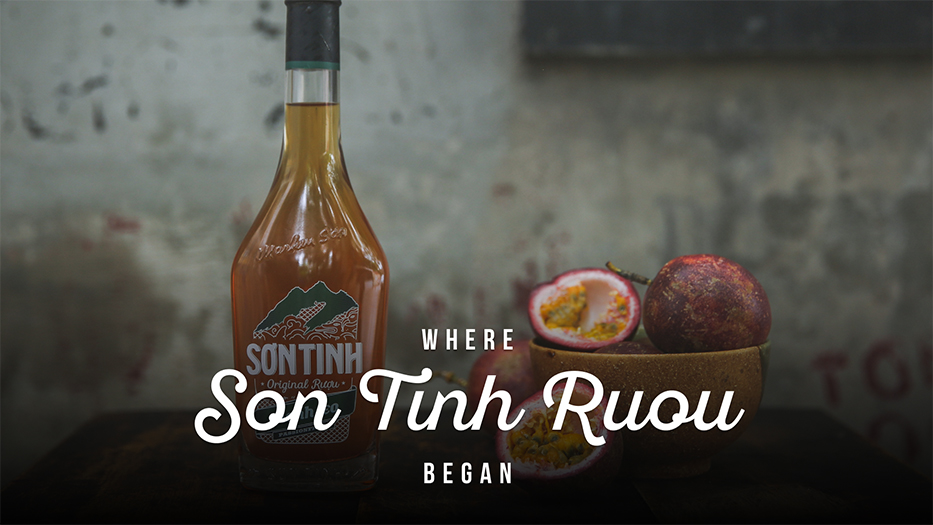
The story of Sơn Tinh Original Rượu began when Swiss founder Markus Madeja made his initial voyage to Vietnam.
It was here his love affair with the country’s heritage for traditional hand-made crafts spurred his passion for northern Vietnam’s rice spirit (Rượu Nếp).
Markus’s fascination for Vietnam’s rice spirit drove him to a small village in Phú Lộc, northern Vietnam. Here he absorbed everything there is to know about rượu distillation. Markus watched and learned everything he could from the locals.
The traditional techniques, however, would not meet international standards. So he began to study the contemporary distillation processes from his native Switzerland, and help spread the name of rượu across the world.
He combined the two processes, creating a modern spirit steeped in tradition. To do this, he discarded the top and bottom of the distillation run that contained toxic elements. This was not common practice in Vietnam, but an integral part of distillation in the west.
Markus was determined to create a product of higher standards and pleaded with the villagers to discard the toxic elements of their spirit.
The request was largely rejected, but one villager agreed to make one special batch, keeping only the middle portion that contains the purest alcohol. Reluctantly, they discarded 50% of the yield and to the villager’s surprise, the rice spirit produced was crisper and more aromatic. Plus, it didn’t leave him with the nasty hangovers he was used to.
Markus’s product would go on to be known as Rượu Sơn Tinh. It was a new type of Vietnamese rice spirit, distinguished by its tradition and modernity.
Defining rice spirits at international competitions

From the moment Rượu Son Tinh started to bring back medals in international spirit competitions, it became obvious that it was in, and needed, a category of its own.
That’s why, in 2012, Sơn Tinh set out to make one.
Why? It all starts with the unique flavour of rice spirit. Add on twelve robust flavours, and the differences between Rượu Son Tinh and spirits like vodka and shōchū become obvious.
Traditional rượu is a complex Vietnamese rice spirit. It’s loved by many, but has started to lose favour in its country of origin, garnering itself a bad name because of improper distilling techniques.
Rượu Sơn Tinh, on the other hand, takes modern fermentation techniques to create a safe product. By removing the toxins in the head and tail of the process, Sơn Tinh has created a product that meets international standards.
A new category was created for Vietnamese spirits in international spirit competitions, bringing rượu to the world stage.
Sơn Tinh won its first award at the International Wine and Spirit Competition in London in 2011, taking Silver for both Sơn Tinh Táo Mèo and Sơn Tinh Mỹ Tửu.
Rượu is a unique product, and deserves its own unique category. That’s why in 2012 Sơn Tinh ensured that, for the first time in history, rượu was recognised as an official category for Vietnamese rice spirit.
Thanks to Sơn Tinh, rượu now stands amongst whiskey, vodka, gin, rum, bourbon, tequila and bourbon in the alcoholic beverage category.
Sơn Tinh is not only breaking away from the pack, but it is also leading it.
Production – Capturing the spirit/essence of rice
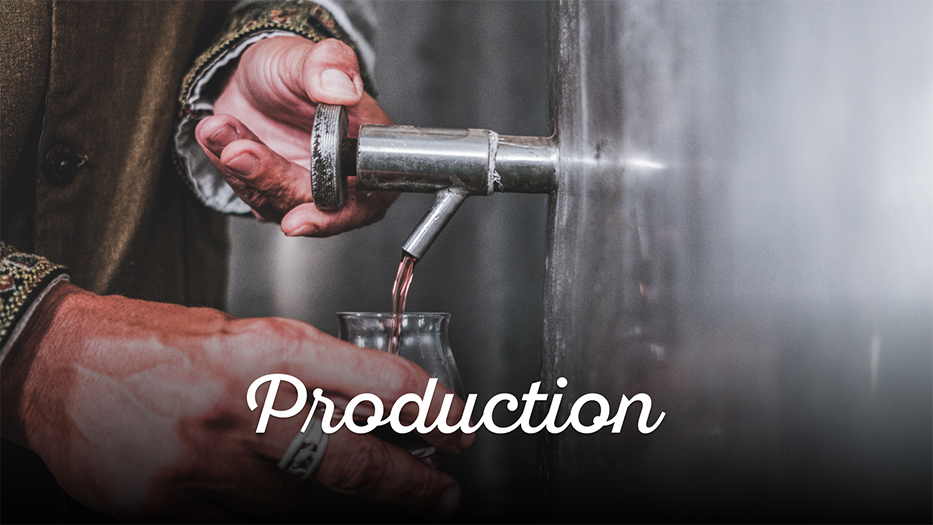
So, what is the difference between rice wine and rượu?
Simply put, rượu starts as a rice wine before passing through several different stages of distillation and maceration.
Rượu Son Tinh is created through a combination of traditional Vietnamese techniques and modern western practices. A combination of carefully selected traditional, raw ingredients and imported copper stills creates a product that respects traditional values while providing a high-quality spirit.
Fermentation and distillation
The process starts with the finest sticky rice sourced from the Red River Delta, the home of Vietnam’s rice farming. It’s cooked up using traditional methods, which results in a lower yield than industrial techniques, but draws out the full-bodied, natural flavours of the rice.
Yeast developed in Phú Lộc is spread over cakes of cooked rice, then left for two weeks to ferment. This is called the mash.
It’s existed as a part of Vietnam’s rượu industry for generations, so the yeast is perfectly adapted to northern Vietnam’s humid climate. It also supplies some of the key flavour components of this unique spirit.
To ensure every bottle of Rượu Sơn Tinh comes out as good as the last, Sơn Tinh only produces in small batches. This way, the spirit of every individual batch can be checked as it’s distilling.
Preserving the distinct taste of Sơn Tinh’s rượu during fermentation and distillation makes automating the process almost impossible. Having an artful distiller with the right nose and experienced tastebuds is integral as it’s important to not destroy the balance or scent of the raw material as it distills.
Maceration and maturing
This fragrant spirit is now well on its way to becoming a bottle of Rượu Sơn Tinh. The next step is to marry it with the fruits, herbs and spices of Vietnam.
Relying on century-old expertise and folkloristic traditions, a blend of local fruits, herbs and spices is assembled and macerated in this flavour-absorbing rice spirit.
This process requires a keen eye and an encyclopedic knowledge of Vietnam’s unique produce, their locations, and their growing cycles.
It could be seasonal ingredients, Vietnam’s fragrant sticky rice, or rare herbs from the mountain forests. Rượu Sơn Tinh only uses the finest raw materials nature provides.
Capturing the fragrance and flavours of the ingredients can take either a matter of months, or a matter of years. This part of the process requires continuous observation and patience.
Bottling
Once the rice spirit is saturated with fragrance to Rượu Sơn Tinh’s satisfaction, the final step of our craft process is to bottle the rượu into our award winning bottles.
Thanks to the design and minimised environmental impact, every bottle embodies the Rượu Sơn Tinh mentality of sleek modernisation, tradition and environmental consciousness.
In 2012 Rượu Sơn Tinh re-designed the bottle, working closely with French glass makers Saverglass to create an eco-friendly vessel. Saverglass uses a production process that lessens the harm caused to the environment.
As a French glassmaker with a history dating back to the 15th century, it is the commonality of history and tradition that makes Rượu Sơn Tinh and Saverglass the perfect partners.
Bottle awards
This partnership, along with the creativity from Spanish designer Marc Portell, has led to multiple awards for the bottle alone. Upon launch, Tastings.com gave Rượu Sơn Tinh the Gold Medal for Style, Silver for Form, Silver for Graphic Design, and Bronze for Creativity, as well as Best Embossed Label and the Runner-up for Best Bottle.
With its ergonomic shape handy for mixologists, attention to detail in its design features, and perfect size for sharing, Rượu Sơn Tinh ensures that its craft bottles reflect the essence of the spirits they carry.
Vietnam and rice
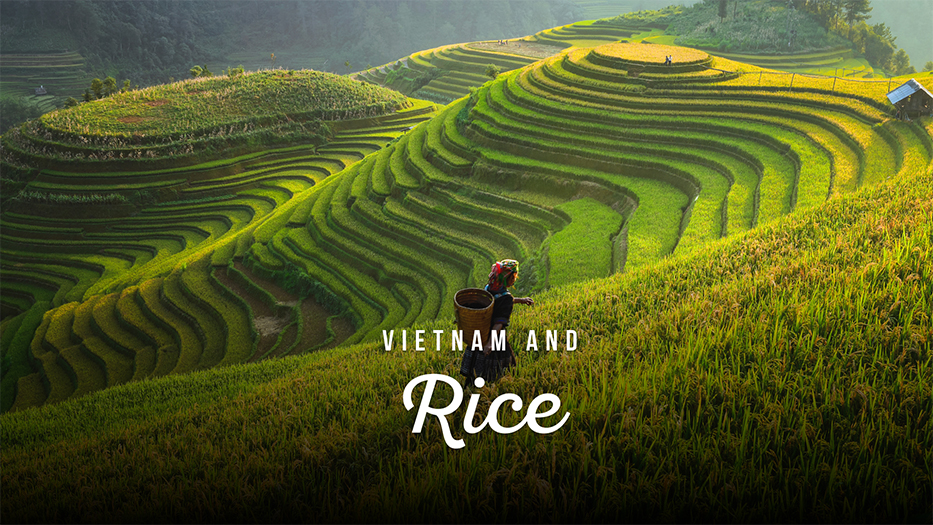
Rice is, without a doubt, the most important element of every bottle of Rượu Sơn Tinh. A grain that has, over thousands of years, shaped the growth and history of Vietnam.
The domestic lifestyle of rice started in what is now southern China some 8,200 years ago. From there, cultivation spread. Suddenly you could find rice farms in Southeast Asia and West Asia, reaching Vietnam around 3,500 years ago.
The importance of rice for Rượu Sơn Tinh is obvious. That’s why only the finest fragrant sticky rice of the Red River Delta is used.
With its lush green fields and fragrant grains, sandwiched between mountains hills, it seemed obvious that the Red River Delta was the ideal spot.
This is where modern Vietnam started, with wild rice cultivation. Ancient Vietnamese people settled here, making the most of their hot and humid surroundings, along with the abundance of ponds and rivers. New rice crops quickly became their dietary staple.
Fast forward to today and Vietnam is the world’s third-largest rice exporter, with the Mekong Delta thriving as one of the world’s largest rice granaries.
In Vietnam, rice is precious. Its Vietnamese name ‘Ngoc Thuc’ compares the grain to jade, a mineral of significant value and a gift of heaven and earth.
It should only make sense then that rice would make its way into Vietnam’s many ceremonies. One Vietnamese saying goes, ‘Without alcohol, rituals lose their character’.
You’ll find its presence at holidays, funerals, weddings, and most special occasions. And these days, you’ll find a bottle of Rượu Sơn Tinh accompanying the altar.
Vietnamese culture in 12 flavours
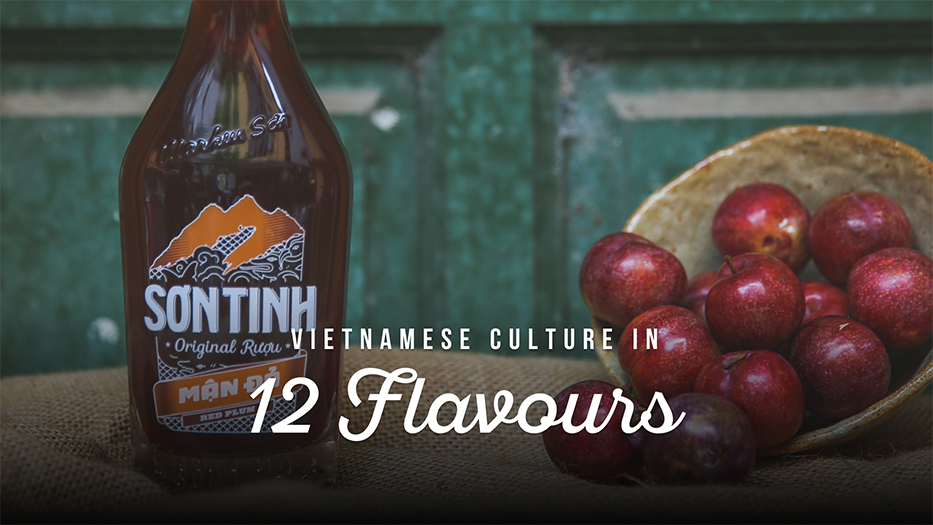
Vietnamese cuisine is rarely simple. With roots in local folklore, food and drink in Vietnam follows principles of Yin and Yang and the Five Elements, constantly striving for balance in the body.
Back in the 90s, when Markus founded of Ruou Son Tinh, he faced challenges more than just new distillation methods. He not only discovered and identified new flavours, but had to understand their constituent materials, how they’re used locally, and their conceptual properties.
Eating and drinking wasn’t just about getting drunk and filling your stomach, but finding combinations to balance ‘hot’ Yang and ‘cool’ Yin ingredients that excited liquor connoisseurs’ taste-buds.
Sơn Tinh’s 12 flavours embody this spirit. It’s not about taking foreign product and adding a Vietnamese twist, but bringing a staunchly Vietnamese product into the 21st century.
Sơn Tinh Minh Mạng, for example, is named after, and inspired by, the former Emperor of the Nguyễn Dynasty. Minh Mạng has a legendary status as father to more than one hundred children, and this complex spirit is said to generate that same virility.
The spirit that takes his name is made out of a secret mix of 35 herbs and spices, selected by court officials who specialised in philosophy and herbalism. These specialists sourced the finest produce available at the perfect time of the year.
Likewise, Rượu Sơn Tinh’s other herbal recipes are inspired from folklore, tradition, creating exotic flavour combinations almost impossible to describe.
The local fruits had their own stories.
On his travels in the northern mountain regions, Markus discovered an array of plums and apricots. These fruits were so sour, yet aromatic, that they were exclusively used in juices, for flavouring liquor, or pickled as remedies during long, cold winter months.
In Yen Bai, Lao Cai and Tuyen Quang he discovered Táo Mèo, a wild-growing tree only accessible by the local Hmong people on arduous foot tracks .
Due to the fruits’ apple-like appearance and flavour, the fact that the tree belongs to the family of roses, and no other Western name available, Markus named the fruit ‘Rose Apple’. The fruits did give off an infatuating scent, but despite being inedible if not processed, they were a common sight in people’s home-brew liquor jars or as digestion-inducing tonic.
It’s this crafted combination of traditional knowledge, unique fruits, herbs and spices, and key ingredient, sticky rice from the Red River Delta that makes Rượu Sơn Tinh so proudly Vietnamese.
This is why we call our authentic rice spirit ‘Vietnam in a glass’.
